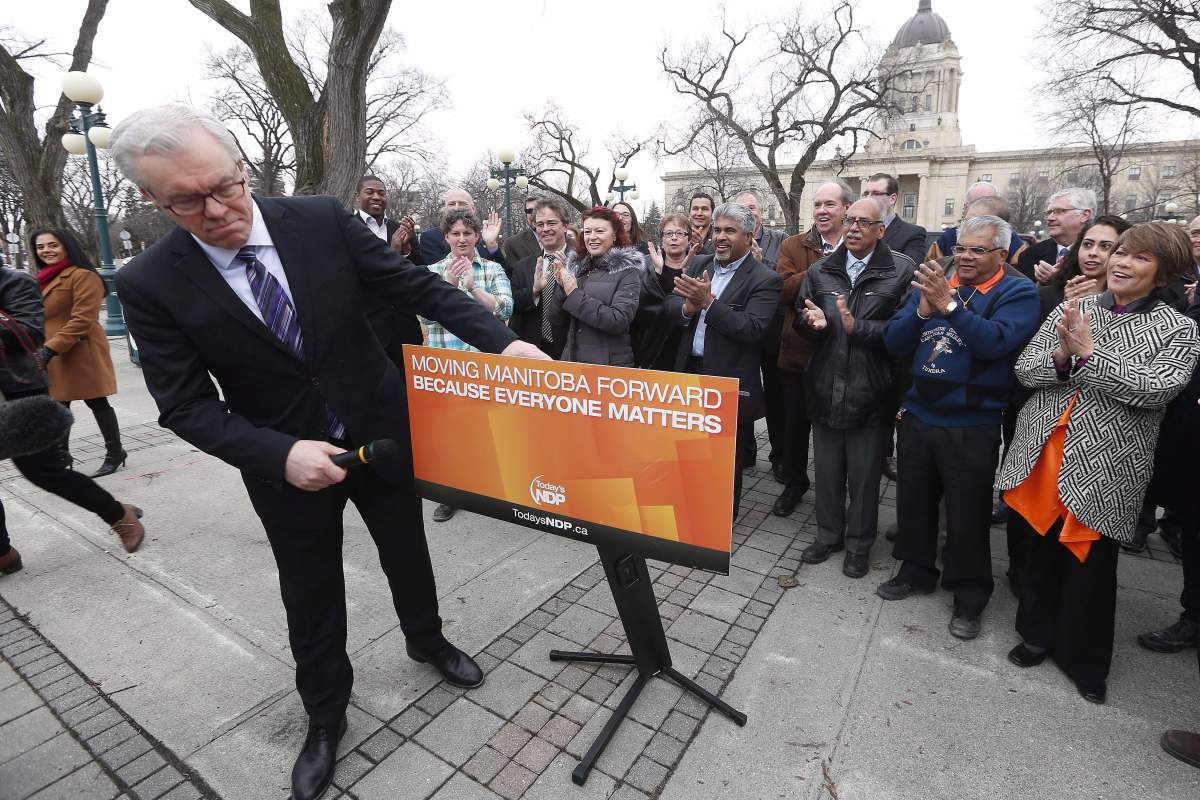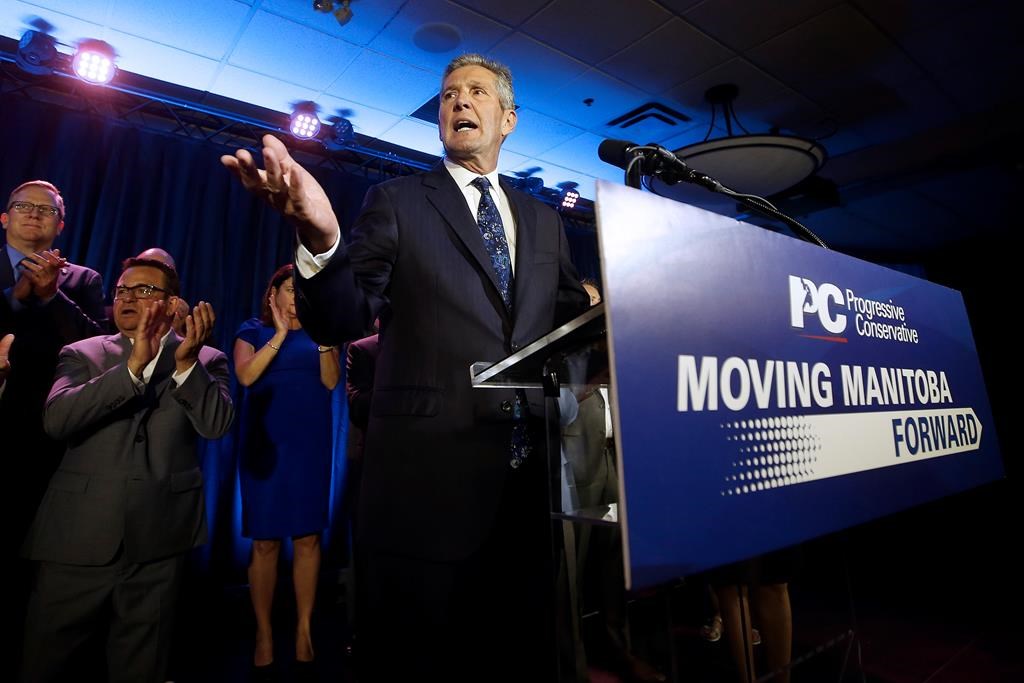A Manitoba election is scheduled for Tuesday. Here is a look at Manitoba elections and governments over the past 20 years:

New Democrats, 2003

The NDP under then premier Gary Doer wins a second consecutive term with a larger majority, capturing 35 of the 57 legislature seats. The New Democrats secure longtime Progressive Conservative strongholds in suburban Winnipeg. Party leader Stuart Murray steps down two years later after lukewarm support in a party leadership review. He is replaced by Hugh McFadyen.
New Democrats, 2007
The NDP under Doer wins a third consecutive majority with 36 seats. Two years later, Doer leaves the premier’s office to become Canada’s ambassador to the United States. The New Democrats select Greg Selinger, Doer’s longtime finance minister, to lead them into the next election.
New Democrats, 2011
Under Selinger, the NDP wins a fourth consecutive mandate and captures a party-record 37 seats. The Progressive Conservatives get 44 per cent of the popular vote, but come out with only 19 seats — the same number they won in 2007. McFadyen announces on election night he will step down. He is succeeded by Brian Pallister in 2012. Political fortunes start to shift in 2013 when the NDP government raises the provincial sales tax.
Progressive Conservatives, 2016
The Progressive Conservatives under Pallister sweep the NDP from power and capture 40 seats, the largest majority in Manitoba in a century. Selinger announces his resignation as NDP leader on election night, and is succeeded in 2017 by Wab Kinew.

Get daily National news
Progressive Conservatives, 2019
Pallister calls an election a year ahead of schedule and wins a second consecutive mandate with 36 seats. The New Democrats increase their seat count to 18 from 12. After the COVID-19 pandemic begins, Tory support in opinion polls drops sharply. Pallister resigns in 2021, and the Progressive Conservatives choose Heather Stefanson as leader in a narrow win over former member of Parliament Shelly Glover.










Comments